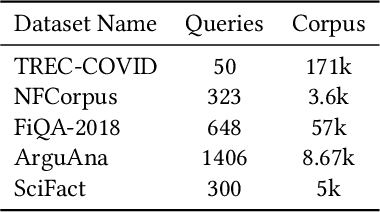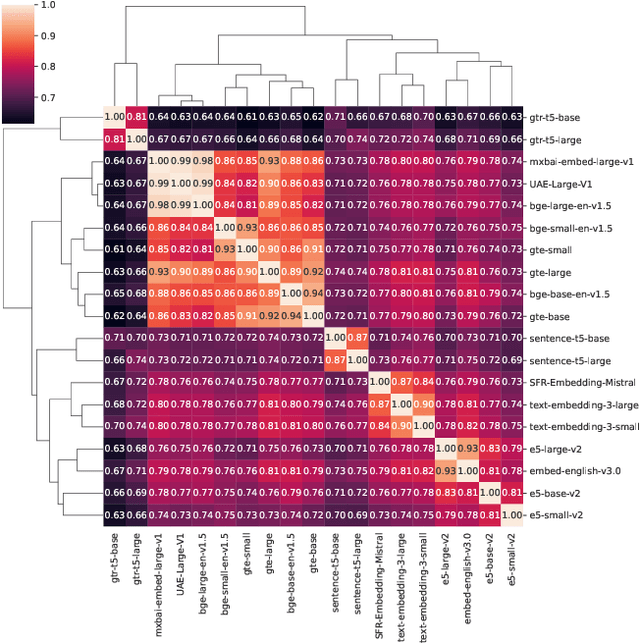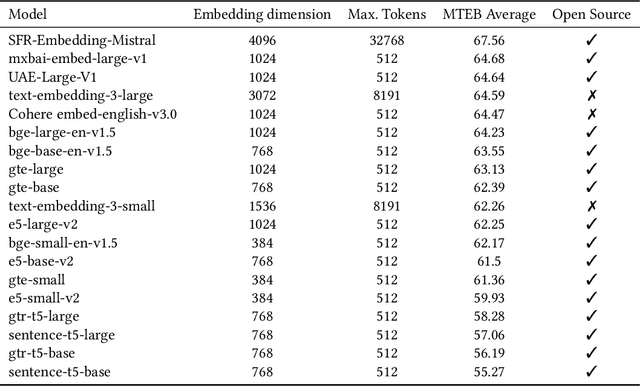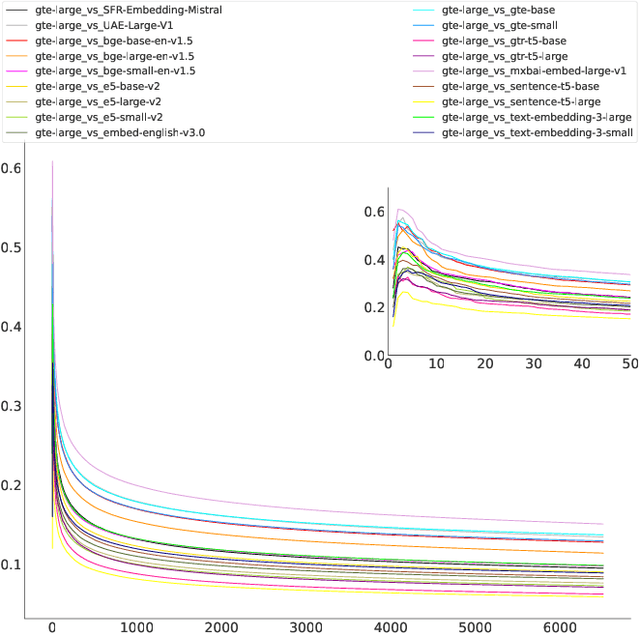Laura Caspari
WebFAQ: A Multilingual Collection of Natural Q&A Datasets for Dense Retrieval
Feb 28, 2025Abstract:We present WebFAQ, a large-scale collection of open-domain question answering datasets derived from FAQ-style schema.org annotations. In total, the data collection consists of 96 million natural question-answer (QA) pairs across 75 languages, including 47 million (49%) non-English samples. WebFAQ further serves as the foundation for 20 monolingual retrieval benchmarks with a total size of 11.2 million QA pairs (5.9 million non-English). These datasets are carefully curated through refined filtering and near-duplicate detection, yielding high-quality resources for training and evaluating multilingual dense retrieval models. To empirically confirm WebFAQ's efficacy, we use the collected QAs to fine-tune an in-domain pretrained XLM-RoBERTa model. Through this process of dataset-specific fine-tuning, the model achieves significant retrieval performance gains, which generalize - beyond WebFAQ - to other multilingual retrieval benchmarks evaluated in zero-shot setting. Last but not least, we utilize WebFAQ to construct a set of QA-aligned bilingual corpora spanning over 1000 language pairs using state-of-the-art bitext mining and automated LLM-assessed translation evaluation. Due to our advanced, automated method of bitext dataset generation, the resulting bilingual corpora demonstrate higher translation quality compared to similar datasets. WebFAQ and all associated resources are publicly available on GitHub and HuggingFace.
Beyond Benchmarks: Evaluating Embedding Model Similarity for Retrieval Augmented Generation Systems
Jul 11, 2024



Abstract:The choice of embedding model is a crucial step in the design of Retrieval Augmented Generation (RAG) systems. Given the sheer volume of available options, identifying clusters of similar models streamlines this model selection process. Relying solely on benchmark performance scores only allows for a weak assessment of model similarity. Thus, in this study, we evaluate the similarity of embedding models within the context of RAG systems. Our assessment is two-fold: We use Centered Kernel Alignment to compare embeddings on a pair-wise level. Additionally, as it is especially pertinent to RAG systems, we evaluate the similarity of retrieval results between these models using Jaccard and rank similarity. We compare different families of embedding models, including proprietary ones, across five datasets from the popular Benchmark Information Retrieval (BEIR). Through our experiments we identify clusters of models corresponding to model families, but interestingly, also some inter-family clusters. Furthermore, our analysis of top-k retrieval similarity reveals high-variance at low k values. We also identify possible open-source alternatives to proprietary models, with Mistral exhibiting the highest similarity to OpenAI models.
 Add to Chrome
Add to Chrome Add to Firefox
Add to Firefox Add to Edge
Add to Edge